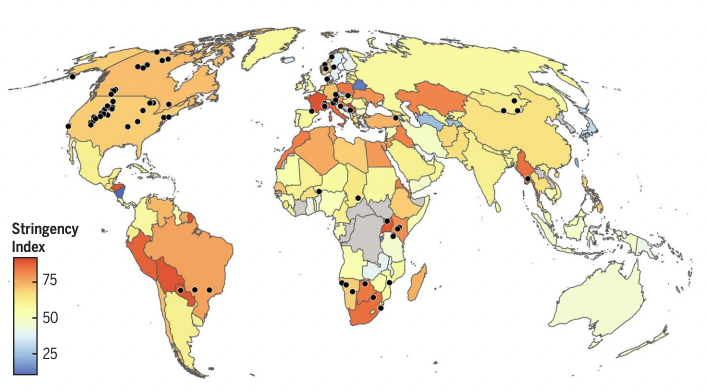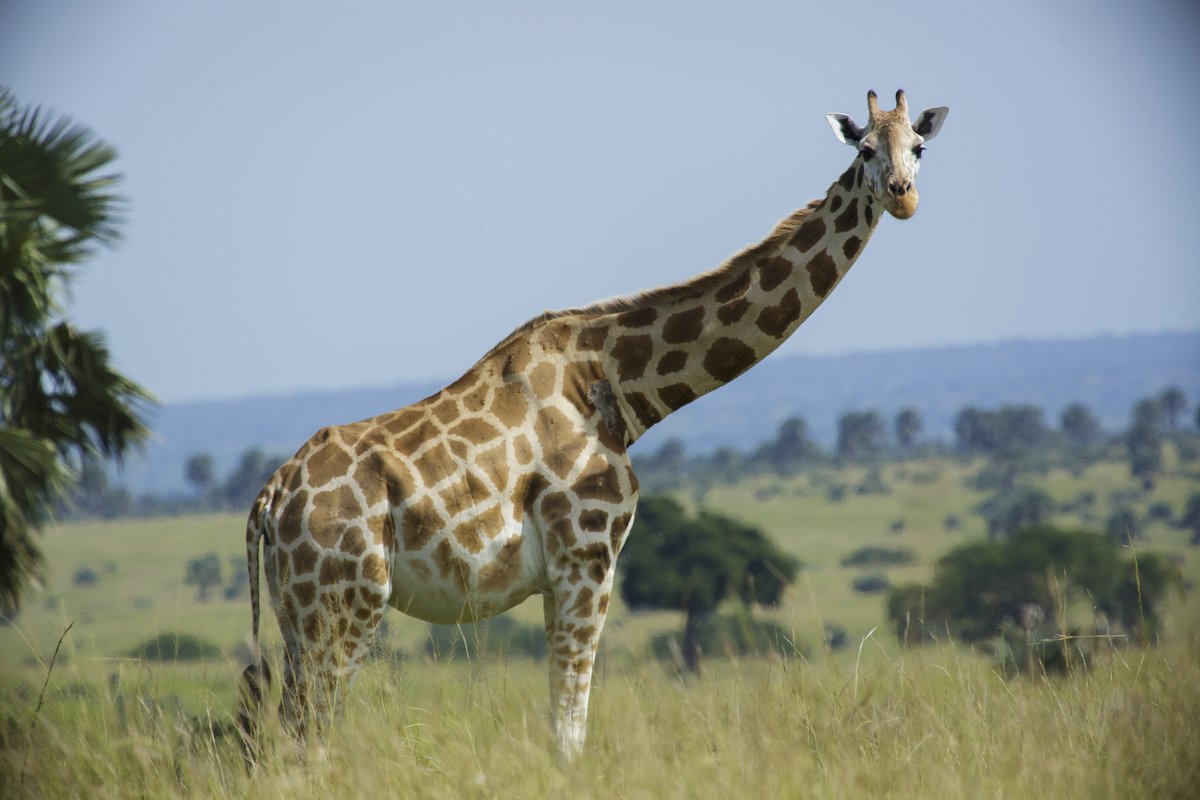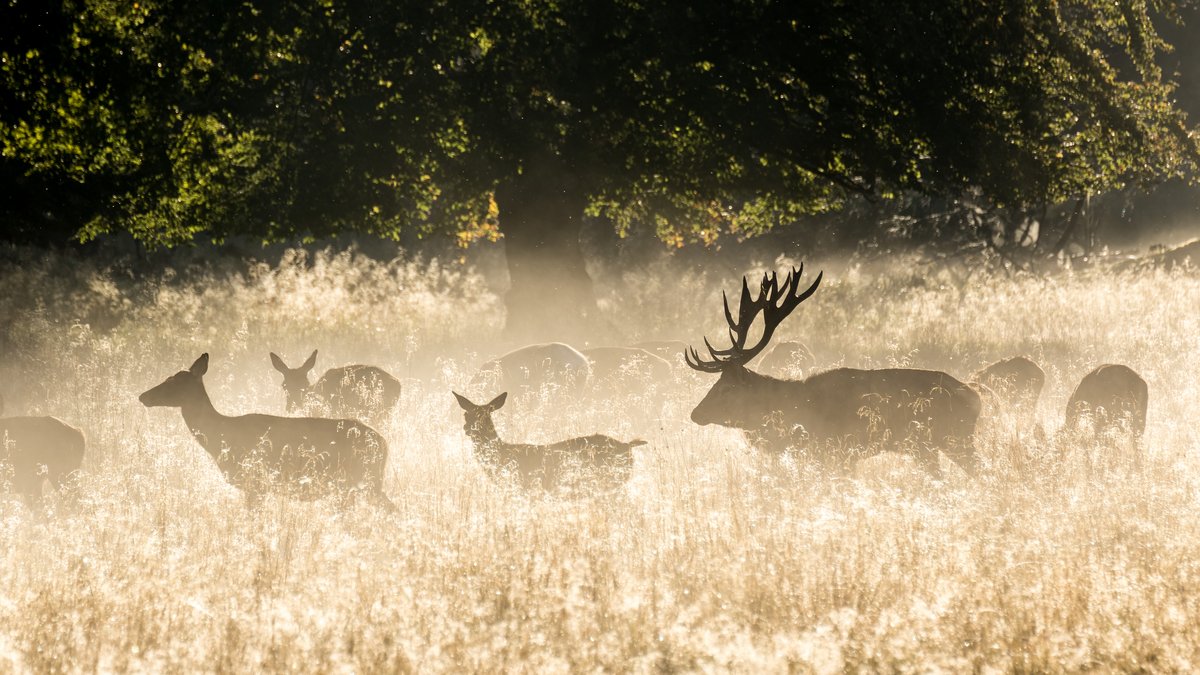The corona lockdowns changed the behaviour of wild animals around the world
GPS trackers on 43 species across the globe show that animals changed their behaviour when humans stayed indoors. These were the results of an international research project that Aarhus University took part in.

In the spring of 2020, one country after another went into lockdown as Covid-19 spread across the globe. In some places, e.g. China, the civilian population was kept inside by the authorities. Other countries, like Spain, had a curfew in place for weeks, during which only short trips to the supermarket were allowed.
The lockdowns meant there were suddenly much fewer cars on the roads and people in forests and parks. While we were sitting at home watching Netflix, wild animals emerged from the bushes and edges of the forest. They ventured closer to the roads and cities that had suddenly emptied.
We know this thanks to data from GPS trackers attached to a large number of terrestrial mammals around the world.
Denmark contributed to the survey with data from GPS trackers on four stags from Oustrup Hede a little north of Herning. The stags had been tagged the year before, and this made it possible to compare their behaviour before and after lockdown, explains Peter Sunde, a professor at the Department of Ecoscience at Aarhus University and the person behind the Danish contribution to the research project.
"However, during the lockdowns, we saw that the animals roamed closer to roads and cities. This gave them a bigger area to move around in."
Peter Sunde, professor at the Department of Ecoscience
An unparalleled experiment
The lockdown gave researchers across the world a unique opportunity. Never before had modern science been able to completely remove humans from the equation when studying large mammals.
Today, most mammals live close to humans and are affected by human activity on a daily basis. The new findings show that we humans affect wildlife to a much higher degree than we think, explains Peter Sunde.
"The results reveal that our presence hinders animals' ability to move around. All mammals need to find resources to sustain themselves every day, but the data shows that the presence of cars and humans stresses the animals and limits their movements to small empty areas."
"However, during the lockdowns, we saw that the animals roamed closer to roads and cities. This gave them a bigger area to move around in. However, this only applied to areas that were already heavily impacted by humans. The lockdowns had the opposite effect on areas with low human activity. Probably because natural areas were visited by more people than usual,” he says.

More room to romp around
It may sound contradictory, but the researchers behind the study found that animals moved both less and more when humans were stuck at home.
"The figures show that animals generally reacted differently during different types of lockdown. Probably because the disturbance factor decreased in areas with hard lockdowns, while people in countries with soft lockdowns, such as Denmark, spent more time outdoors than before the lockdown," says Peter Sunde.
The researchers looked at different parameters when analysing the tracking data on the animals. One of the parameters is called the 95th percentile. It covers the five percent longest journeys taken by animals based on connecting the GPS positions tracked. Since animals don't move very much most of the time, even when active, the 95th percentile is a better measurement of their mobility on average.
When the research team looked at how much the animals moved on an hourly basis, the figure across species and countries was on average 12 percent lower in the spring of 2020 compared to the same period the year before. This means the animals made fewer or shorter "long journeys" on average.
"We don't know for sure why this is, but it's likely that they were less bothered by human activity and therefore didn't need to move as much," he says.
But when the researchers looked at the 95th percentile over ten days instead of on an hourly basis, the picture was slightly different: The animals travelled greater distances than normal in areas with hard lockdowns.
"Whereas the hour-to-hour movements of the animals are tactical responses to what’s happening in their immediate vicinity, their patterns of movement over a ten-day period reflect more strategic choices. The animals go where they assess there’s more food and less danger,” he says and continues:
“The study clearly shows that, on a ten-day basis, the animals travelled longer distances in areas where human activity had decreased. The absence of humans gave them a larger area to roam and better opportunities to optimise their own situation - and they took advantage of this. Conversely, their roaming area decreased in areas with soft lockdowns because humans flocked into natural areas.”

Taking better care of wild animals
The corona pandemic has been over for a while, and human activity has returned to normal. Animals, especially in densely populated areas, have once again had to adapt their activity and movement to humans.
This affects both their ability to forage and the amount of contact different species have with each other. But the unique research results show that we can do something about it.
“We can use this new knowledge to become better at planning our activities in nature. We now know that our mere presence dampens the activity of many species. This can ultimately have an impact on where different mammal species can live and in what numbers. We should bear this in mind when planning new constructions, roads or even small forest paths. “Human activity puts a strain on many animals,” says Peter Sunde, and continues:
"But that doesn't mean we shouldn’t spend time in forests. However, the people who organise public access to nature need to know that this has consequences for wild animals. For many years, Danish policy has centred on getting people to use nature as much as possible,” he says.
In recent years, many new shelters and mountain-bike tracks have been constructed around Denmark. And even though that is good for humans, it places an even greater strain on wild animals.
“We still know very little about how increased human activity in nature, such as overnight stays and cycling, impacts the prevalence and population of animals. But I can well imagine that increased recreational use of nature might lower the population densities of disturbance-sensitive species such as deer," he says.

Animals in Denmark probably didn't benefit from the lockdown
Unlike many other countries, Denmark never had an outright curfew. Most shops, attractions and sports activities closed, which meant that people flocked in droves into nature.
Figures from the Danish Nature Agency show that there were twice as many people in state-owned natural areas than before lockdown. Danish animals probably did not get as big a break from humans as animals in other countries.
“The impact on Danish wildlife was most likely the opposite. An increased number of humans in nature probably put an even greater strain on animals than usual,” says Peter Sunde, and continues:
“I live in Mols Bjerge myself, and I’m telling you, it was just like walking down a high street at rush hour. The paths were chock full of people. I’ve never seen that many people in nature before.”
| About the research | |
|---|---|
| Type of study | Field study |
| External funding | The study was funded by a wide range of private and governmental sources from the more than 20 countries contributing. The complete list is shown at the end of the scientic paper. |
| Conflict of interests | Some of the organisations contributing to the study are associated with NGOs that fight for preserving biodiversity and nature. The whole list of associations can be found at the end of the scientific paper. |
| Link to scientic paper | Behavioral responses of terrestrial mammals to COVID-19 lockdowns |
| Contact info | Peter Sunde |
